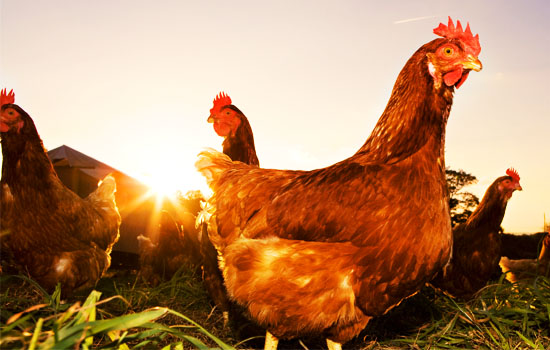The difference between standardized breeding of laying hens and traditional breeding
Standardized farming of laying hens is different from traditional layer chicken cages. It has the following characteristics:
1.1 Varieties: Not all matching chicken breeds and traditional chicken breeds. It is a variety of suitable varieties that aim to produce eggs with “quality and efficiency”. It includes both modern matching chicken breeds imported from China, domestically cultivated supporting systems and grain-laying laying hens. It also includes local chickens that have been selected.
1.2 Scale: no less than 5,000 single buildings. Moderately large-scale farming with a scale of 10,000 and above.
1.3 Chicken houses and facilities: semi-open or closed chicken houses. Supporting automatic feeding, automatic defecation, wet curtain cooling, nipple drinking and other equipment.
1.4 Feed: Prepare the diet according to digestible amino acids. Add enzymes, prebiotics and other pollution-free feed additives, the feed is “quality and safety.”
1.5 Disease prevention: establish a good disease monitoring and prevention system to reduce the incidence of disease.
1. 6 Management: Adopting reserve chickens and laying hens in separate sections, all in and out, and scientific management.
2.1 Chicken Site Selection
Site selection should follow the principles of pollution-free, ecological and sustainable development, and facilitate the principle of epidemic prevention. It should consider comprehensive aspects such as topography, soil, transportation, electricity, material supply and the relationship with the surrounding environment.
The soil quality, water quality, air, surrounding buildings and other environments of the selected site should meet the pollution-free production standards, and the environmental quality meets the requirements of the environmental quality standard NY/T388 for pollution-free food and poultry farms: sufficient water source. The water quality meets the requirements of NY/T5027 for water quality standards for non-polluted food animals and poultry. Prevent pollution pollution in factories such as heavy industry and chemical industry.
There must be long-term planning for site selection and construction of chicken farms. To achieve sustainable development. The production of chicken farms cannot cause pollution to the surrounding environment. The conditions and capabilities for handling manure, sewage and waste should be considered when selecting sites.
2. 2 chicken farm layout
Take people first, after the pollution, in the order of people, chickens, and dirt. Make full use of natural conditions such as terrain to effectively use existing roads, water supply, power supply lines and existing buildings. Starting from the pollution-free safe production and breeding environment, comprehensive consideration of the treatment and utilization of fecal sewage. Save land and use less land. In the plan, the greening content should also be included. It is necessary to have long-term planning and leave room for future development.
The field distinguishes areas such as living areas, office areas, auxiliary production areas, production areas, and sewage treatment areas. According to the dominant wind direction, the topography and the direction of the water flow are the living area, the office area, the auxiliary production area, the production area and the sewage and manure treatment area. If the topography and the wind direction are inconsistent, the dominant wind direction is the main direction, and the terrain slope direction is supplemented. Reduce the impact of high-field areas and chicken houses on low-lying areas and chicken houses.
